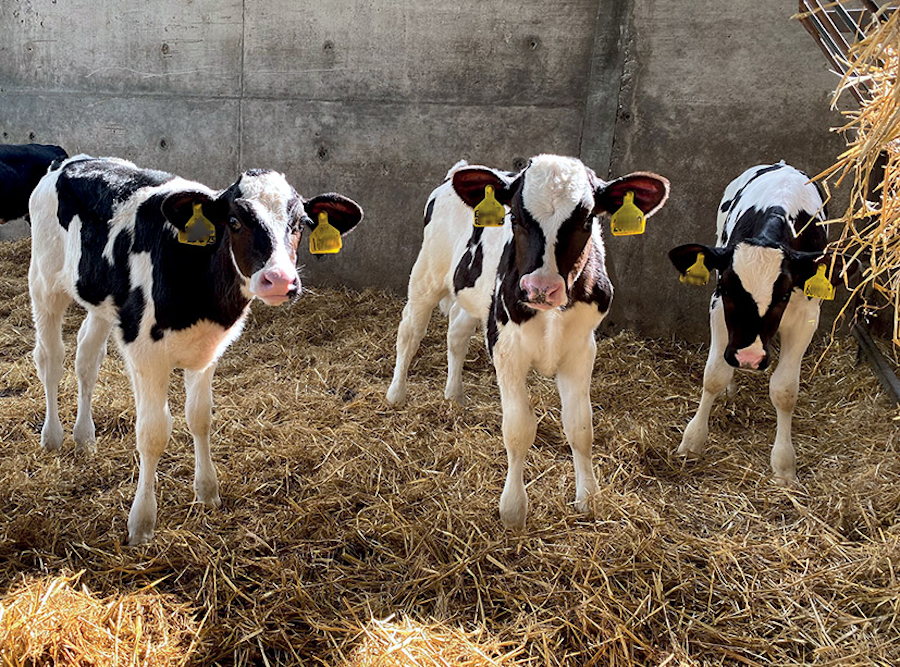BRD control should be re-evaluated on farm, research suggests
17th November 2023
The first specific vaccine for protecting cattle against respiratory coronavirus will soon be available to UK farmers, and follows recent research suggesting BCoV plays a bigger role in BRD than previously accepted. Sarah Kidby reports.

BCoV is part of a family of viruses associated with both enteric and respiratory diseases in ruminants, and is transmitted by aerosol inhalation or the faecal-oral route. But while it is a well-established cause of neonatal calf diarrhoea, BCoV also increases the risk of BRD in calves when present in the respiratory tract, said Dr Paul Burr, vet and director of Biobest.
Speaking during a press briefing for MSD Animal Health, Dr Burr said the UK has previously been sceptical about the importance of BCoV in BRD – but worldwide, it is considered part of the BRD complex.
A widespread issue
Respiratory disease in UK calves is widespread – described as inevitable by some farmers – and comes at a high cost in terms of time, veterinary treatments and long-term profitability. The direct annual cost to the industry has been estimated at £100 million – though this figure is likely to be higher now. It also causes permanent damage to significant parts of the lung tissue, reduces calf growth rates and, in dairy cows, slows the time to first service.
Respiratory disease is a classic iceberg disease and a critical area for the overuse of antibiotics. However, vaccination is under-used in the UK cattle sector, according to MSD research.
It’s a multi-factorial disease, impacted by factors including:
- Pathogens: RSV, parainfluenza-3 virus (Pi3), IBR, coronavirus, mycoplasma; and Pasteurella, Mannheimia and Histophilus
- Environment: Optimal hygiene, minimal cold stress, good ventilation without drafts, and controlled moisture levels
- Nutrition: Colostrum management and intake, quality of concentrate and fibre; consistent and sufficient milk feeding regime; and free access to clean water
- Stress: Management practices, timing and separating of stressful events.
“Opening the door” to other pathogens
BCoV is frequently isolated alongside other, more recognised calf respiratory disease pathogens such as BRSV, M. haemolytica, Pi-3 and M. bovis, suggesting an interplay between these organisms, Dr Burr said.
“Research has shown that BCoV infection disturbs the protective mucus lining of the thoracic tract. It may therefore be that BCoV ‘opens the door’ for the other viral and bacterial pathogens to establish themselves and cause disease.”
Recent research by MSD found BCoV was the most prevalent virus found in routine disease screening and nasal swab samples taken during BRD outbreaks. It was found in 39% of more than 400 nasal swab samples taken between 2020 and 2022, from BRD affected cattle on UK farms. It was less likely to be found as age increased, and more likely in the winter months. If BCoV was identified, it was more likely that Mycoplasma, Mannheimia and Pi3 would also be found.
Additionally, calf serology carried out on 59 UK farms with a history of BRD issues in 2021-2022 revealed 91.5% tested positive for BCoV.
Researchers have also tested boots, clothing stethoscopes and wristwatches etc, and found BCoV survived on these objects after 24 hours, suggesting it could be carried from farm to farm.
Risk factors for BCoV, according to MSD research, included the purchase of colostrum – which could be due to the fact that calves given colostrum from their mother are protected from the specific pathogens on that farm – whereas those given bought-in colostrum are not. Other risk factors included recently purchasing cattle and M. bovis, which was a co-infective agent in 72% of outbreaks.
Dr Kat Baxter-Smith, veterinary adviser for MSD said: “Whilst the pathogenicity of BCoV within the BRD complex remains an unknown quantity, its ubiquitous presence in the UK cattle population – and the recent human experience of coronavirus as a significant respiratory pathogen – suggests a need for a re-evaluation of BRD control by vets and farmers.”
New tool in the armoury
For the first time, MSD has launched a vaccine that specifically protects cattle against respiratory coronavirus.
Bovilis Nasalgen-C is an intranasal live vaccine that can be used for the active immunisation of calves from the day of birth onwards, to reduce clinical signs of upper respiratory tract disease and nasal viral shedding from infection with BCoV.
“Just as coronavirus is a pathogen associated with the common cold and Covid-19, BCoV is a proven pathogen that directly impacts the calf respiratory tract. Consequently, the availability of this new BRD vaccine presents veterinary professionals with another tool in their armoury to improve control of this costly disease,” commented Dr Baxter-Smith.
She recommends first carrying out diagnostics to identify whether BCoV is implicated in any BRD issues, and talk to your vet about factors such as hygiene and colostrum management, so any necessary adjustments can be made before implementing a vaccination programme. This will give the vaccine the greatest chance of success.
The MSD Calf Health Checklist, available from the App Store, is a useful audit tool for farmers and vets.
The vaccine, due to be available in the UK in late December/early January, is already in use in the EU and Ireland. A key benefit is the vaccine can be stored for up to 24 hours at room temperature after reconstitution. It can also be used on the same day (in the other nostril) as Bovilis INtranasal RSP Live, which offers protection against both bovine respiratory syncytial virus (BRSV) and Pi3.
It can be used on the day of birth, with protection in place by five days after vaccination with a 12-week duration. Administered via a single 2ml intranasal dose it comes in one, five and 20-dose packs. It’s suitable for small and large herds and can be given to cattle using a syringe or applicator device.
